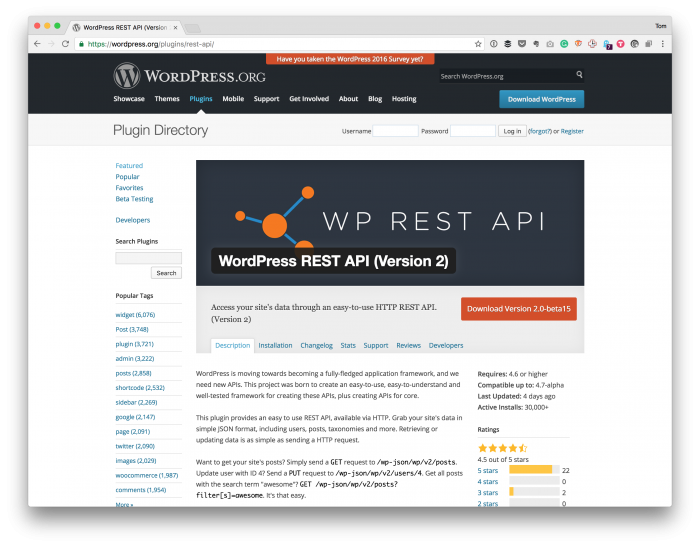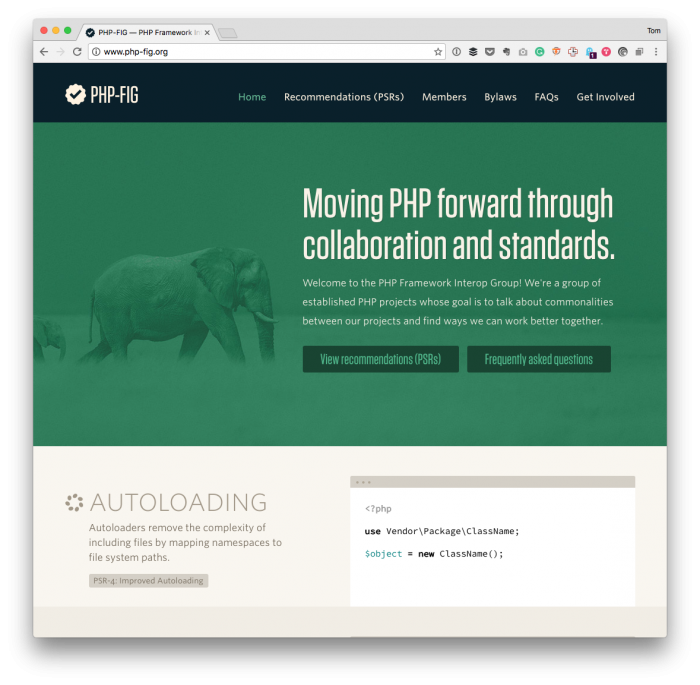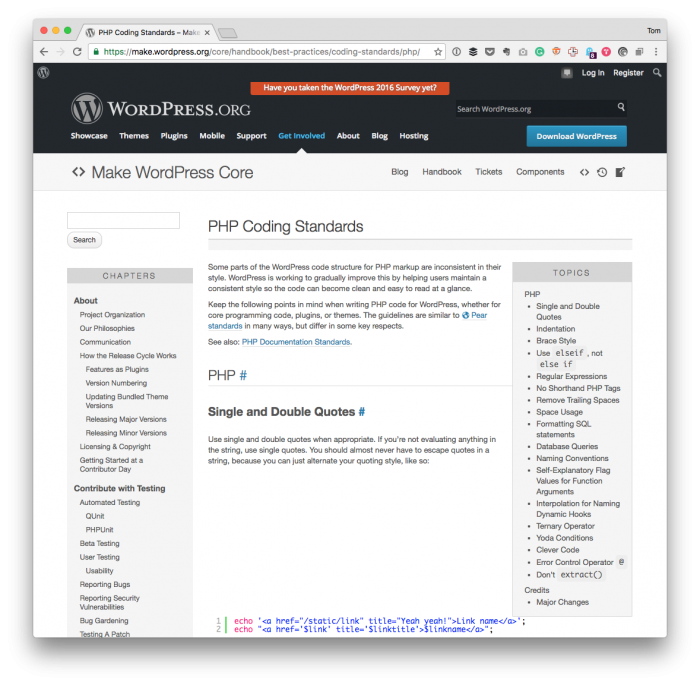There are a lot of reasons that people are excited to have the WordPress REST API merged into core.

I think some are excited because they won’t need to include the plugin dependency anymore; others, honestly speaking, I think are happy to see it merged for the sake of it. Whatever the case, having the entire infrastructure is core is neat, and I’m excited, but almost none of the client work I’m doing at the moment warrant it.
I believe that will change, though, as people learn what we can do with it. But until that time comes, one of the things I like to do is try to think broadly about what could the REST API offer that isn’t directly related to blogging.
And this leads me to a much broader question.




